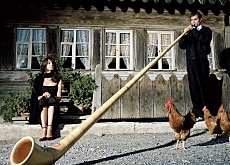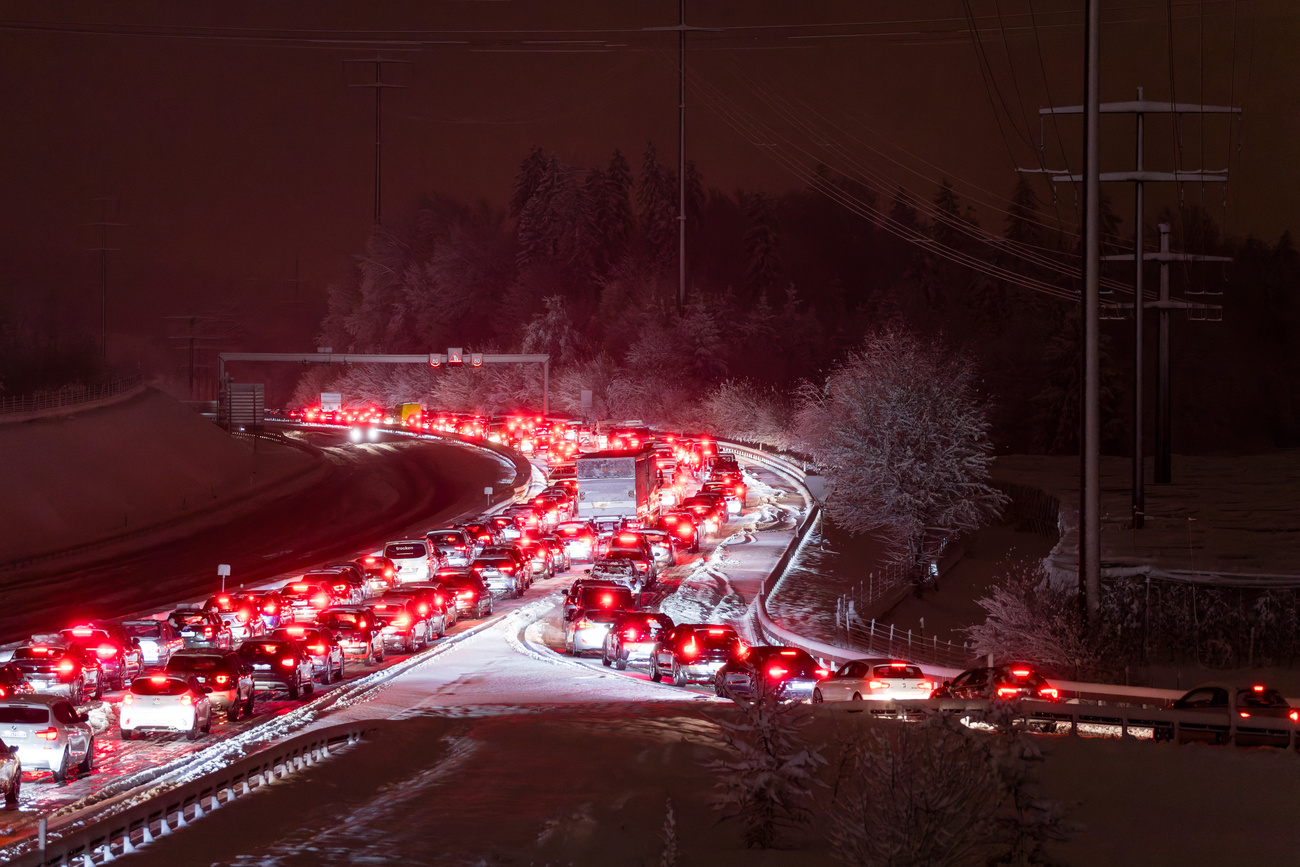Would the real Switzerland please stand up?

It’s hard to think of another country whose national identity is so closely associated with myths and clichés as Switzerland.
From banks, watches, cheese and chocolate to Heidi, mountains, armed neutrality and the federal railways, even experienced “Swiss-watchers” struggle to distinguish tradition from reality – and myth from marketing.
Photographer Christina Koerte, who was born in Switzerland with dual nationality and now lives in Germany, is probably as well placed as anyone to try to unravel the jigsaw that is Swiss national identity.
Her new book – We’re Different, Actually – takes seven national myths and clichés and explores them by using different photographic styles to see what they’re really “made of”.
“Switzerland is considerably more complex than [the] clichés suggest, but it takes time and effort to understand this country,” she told swissinfo.
“Visitors tend to be short of time, if not of francs, and the currency for understanding what goes on here is time.”
Which Switzerland?
Koerte says the first question facing any visitor is simple: which Switzerland?
With a surface area of just 41,000 square kilometres, Switzerland is barely one tenth as large as California, or roughly seven per cent the size of France.
For its size, though, it boasts an astonishing degree of geographical and cultural diversity, which almost inevitably leads to simplifications and clichés.
“[Living abroad] I have become increasingly interested in this trivialisation and reduction of a country to such well-worn thought patterns,” says Koerte.
“I wanted to look at the relationship between myth, cliché, tradition and reality. On the one hand, clichés that confirm the cliché and, on the other, caricatures and travesties that serve only as irritants.”
Koerte is certainly not the first Swiss to question the deeper meaning of her own national identity.
She quotes author Peter Bichsel: “As Swiss, we picnicked at the top of the Matterhorn every Sunday. That’s how we got to know the Swiss, and the Swiss us.”
“Heidiland”
Koerte’s approach to the “Heidi” myth is typically different – instead of the standard visual clichés of an unspoilt young girl romping through unspoilt Alpine countryside, she begins with a low-key snapshot of the “Heidiland” motorway service area.
This is juxtaposed with an equally drab-looking picture of the Maienfeld region where author Johanna Spyri actually set her famous novel. The area is geographically distinct to the region known as “Heidiland” to many tourists today.
No other figure has moulded images of Switzerland to the same extent as Heidi, but the reality is that she is “merely a dream of something that no longer exists” – a phenomenon that contributing editor Ueli Gyr refers to as “Heidisation”.
“Heidisation stands for comprehensive and active tourist focus, for a process where – though within quality limits – what can be commercialised is commercialised, and where if something can be exploited, it is,” Gyr says.
“The concept is to market the Heidi myth, not the person herself. Time will show how long this can be exploited – but in terms of tourism, there is still a long way to go.”
Sweat and sawdust
A more “down-to-earth” Swiss cliché highlighted by Koerte is the peculiar national sport known as “Schwingen” – a type of wrestling on a sawdust-covered floor.
She opens the book with a series of pictures entitled “Blood, Sweat and Sawdust”, which shows contestants fresh from the heat of battle, covered in appropriate amounts of all three substances.
For an outsider, the first impression is that they are common-or-garden wrestlers who have forgotten to change out of their working clothes – they fight wearing jeans covered by loose shorts.
And the Alpine cheese makers (“Sennen”) who traditionally dominate the sport can be recognised by their blue shirts – and the fact that even the winners have to return to their mountain farms on foot.
While the sport evokes national passions intense enough to qualify it for a place in the pantheon of Swiss clichés, it is still little known elsewhere – in stark comparison to Japan’s physically and financially well-padded Sumo wrestlers.
Oh, to be Swiss…
Other topics highlighted by Koerte are the Swiss countryside (in a section entitled “Father, Are There Countries Without Mountains?”), some unusual angles on “typical” Swiss products such as alphorns and army knives, and a tongue-in-cheek look at Swiss food and drink.
It goes without saying that no book on Swiss myths would be complete without a mention of William Tell – the national independence hero who probably never was.
Koerte bases her subversive approach on a well-known book by Swiss author Max Frisch (“William Tell As A Schoolbook”) and deliberately goes in search of pictures that “make it hard to imagine heroism”.
Another section (“Oh, To Be Swiss, Just For A Day”) also leaves the reader with more questions and answers about what it means to be Swiss in the multi-cultural society of today.
A series of photos shows mostly “foreign-looking” families in “Swiss holiday” mode, with captions identifying them as tourists from Germany, Poland, Sri Lanka and Japan.
However, an “alternative” set of captions says they are Swiss nationals from Schwägalp, Frutigen, Grindelwald and Zurich respectively.
Which “Switzerland” is reality? Which do you prefer?
swissinfo, Chris Lewis
Photographer Christina Koerte was born in Switzerland with dual nationality and has lived in Germany for seven years.
She describes We’re Different, Actually as “a tribute to Switzerland, with some affectionate tongue-in-cheek comment, and not a few surprises”.
The book is published (in German, with an English preface) by Werd Verlag, Zurich.
The book takes seven myths and clichés – some obvious, some less so – and uses different photographic styles to explore them.
Koerte says she came up with the idea because she was interested by the “trivialisation and reduction” of images of Switzerland abroad.
She says the “currency” for understanding the country is not money, but time.

In compliance with the JTI standards
More: SWI swissinfo.ch certified by the Journalism Trust Initiative










You can find an overview of ongoing debates with our journalists here . Please join us!
If you want to start a conversation about a topic raised in this article or want to report factual errors, email us at english@swissinfo.ch.